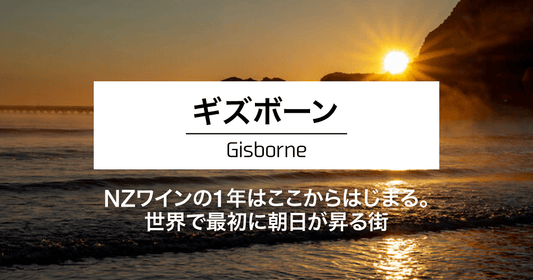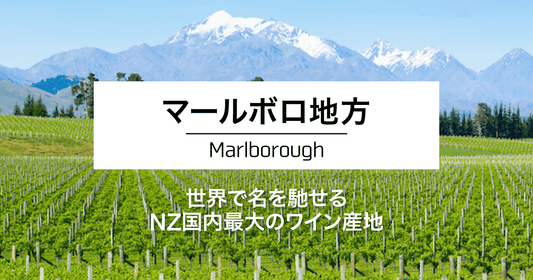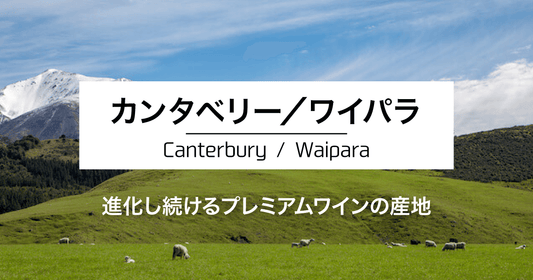
Nelson is a wine-producing region that encompasses the small town of Nelson.

Located on the northern coast of New Zealand's South Island, this area is surrounded by lush, natural beauty.
Nicknamed "Sunny Nelson" due to the high rate of sunny days, the area is characterized by a pleasant climate throughout the year. Taking advantage of this climate, the production of fruits, hops (an ingredient in beer), wine, and other crops is thriving.
It is also famous as an art town, with cafes and galleries dotted throughout the city, and is home to artists in a wide range of genres, including glass art, painting, sculpture, photography, and fashion.

The three national parks surrounding the region allow you to experience New Zealand's great outdoors to the fullest, with activities such as sea kayaking and hiking, and wildlife spotting.

Abel Tasman National Park
When it comes to wine, the region's mild climate allows it to produce high-quality wines that are rich in fruitiness and have a strong structure.
Typical examples include Sauvignon Blanc , Pinot Noir , and Chardonnay .
The Nelson region also places emphasis on aromatic (white) grape varieties .
While there are many large wineries in the neighboring Marlborough region, New Zealand's largest wine producing region, Nelson is home to many boutique wineries. Although production is small, the wines they produce are carefully crafted and highly regarded around the world.
The Nelson region has a mild and comfortable climate. We will introduce the appeal of this region's wines along with the characteristics of the region.
A wine with rich fruit flavours
The mild climate and abundant sunshine in the Nelson region allows grapes to grow with a concentrated flavor, producing wines with rich fruit flavors.
Mild Climate
As it is affectionately known as "Sunny Nelson," the region has many sunny days and gentle temperature differences throughout the year.
- The average maximum temperature in summer (February) is 22.4℃
- The average maximum temperature in winter (August) is 13.1℃.
The difference in maximum temperature between summer and winter is just under 10°C.
The temperature difference in Tokyo is about 22 degrees Celsius, so you can see how mild it is. However, there is a large difference in temperature between day and night, so the grapes grow slowly.
Although the north faces the sea, the west, south, and east are surrounded by mountains, which protect the grapes from the strong western winds.
Representative grape varieties
Although the Nelson region is not well known as a wine producing region, the wines produced with care by family-run wineries in the region's favorable climate are attracting attention from around the world.
Like many other regions in New Zealand, the region is dominated by the white wine grape variety Sauvignon Blanc , which accounts for about half of the region's production.

Sauvignon Blanc produced in the Nelson region is characterized by its approachable quality, with a mild acidity, rich fruitiness and hints of tropical fruit.
In recent years, Pinot Noir, with its ripe tannins and complex flavor, and high-quality Chardonnay, which is suitable for long-term aging, have also been highly acclaimed.
In addition, the cultivation of aromatic varieties with rich fragrances is also popular.
- Pinot Gris
- Riesling
- Gewurztraminer
The main varieties cultivated are
This region has long had a large number of immigrants of German and Austrian descent, and as a result, the German grape varieties Riesling and Gewurztraminer are also highly valued.
The subregions are Upper Moutere and Waimea Plains.
Nelson is divided into two sub-regions :
- Upper Moutere
- Waimea Plains

The Upper Moutere is a gently sloping hilly area on the west side of the Nelson region.
The region is relatively cool and has gravelly soil that is rich in minerals, which is rare in New Zealand. These conditions make it ideal for growing Pinot Noir and aromatic grape varieties.
The mountains protect against winds blowing from the west, allowing for stable cultivation, and some of the areas have steep slopes that allow the crops to receive sunlight efficiently.
The other, Waimea Plains , is named after the Maori word for "river garden."
The soil is characterized by gravel and clay deposited by the Waimea River, which allows for good drainage, roots to grow deep underground, and plenty of sunlight, making it ideal for growing high-quality grapes.
We mainly produce Chardonnay and Pinot Noir, which are light, fresh and have a gorgeous aroma.
The fourth largest producer in Japan
In terms of national production, the Marlborough region ranks first with an overwhelming 77.7% of the total harvest, followed by Hawke's Bay (9.8%) and Gisborne (4.3%), with Nelson coming in fourth (2.6%) (2020).
A winery with a unique character
Although production volumes are far less than those of famous wine-producing regions such as Marlborough, there are a small number of excellent wineries.
If you are visiting as a tourist, one of the attractions is that the wineries are concentrated in the Upper Moutere and Waimea Plains, making it possible to tour the wineries efficiently in a short amount of time.
Here we introduce some of the most representative wineries in the Nelson region, as well as wineries that are attracting attention from Japanese winemakers.
Seifried | The oldest winery
Seyfried is the oldest winery in Nelson, a city of sunshine and art. It was founded in 1973 by Austrian Hermann Seyfried and his wife.
This is the only winery in NZ that focuses on the rare red wine grape variety Wurzer. The aroma derived from the natural yeast has nuances of lychee, jasmine and spices, making it very unique.
As Seyfried is originally from Austria, many of the grapes grown here are from Eastern Europe, and they also produce some excellent sweet Rieslings.
Also in 2019, Seyfried's Sauvignon Blanc, which is widely exported not only domestically but also overseas, was selected as "Nelson's Best Wine" in the Open Wine (White) category of THE NEW ZEALAND WINE OF THE YEAR (2019) .
*The Open Wine category will select wines that are widely loved both in Japan and overseas.
Seyfried is a pioneer in the Nelson region. The winery is close to the sea and has a very open atmosphere.

Green Songs | Winery run by a Japanese wine maker

Image source: Southern Cross Co., Ltd.
Next, we would like to introduce Green Songs, a winery run by a Japanese winemaker.
This is an eco-friendly winery run by Kohei Koyama, who spent many years in the business world in Tokyo and London before moving to New Zealand in 2011 to pursue winemaking.
He studied viticulture and winemaking at Lincoln University, becoming the first Japanese to graduate at the top of his class. He then studied winemaking in New Zealand and California, before establishing his own winery in 2014.

Image source: Southern Cross Co., Ltd.
Atamay Village , where Green Songs' fields are located, is a joint venture of orchards and farms. The common goal here is to live a life that places as little strain on the global environment as possible. All electricity in the village is generated by solar power, and rainwater is reused, so they grow Sauvignon Blanc, Pinot Noir, Pinot Gris, and other grapes while giving the utmost consideration to the natural environment.
We will continue to keep an eye on the wines produced by the adventurous Koyama.
▶ Green Songs (Southern Cross introduction page)
Neudorf Vineyards | Winner of the British Wine Award
Neudorf Vineyards , located in the Motueka region of Upper Moutere, rose to fame in 1993 when its Chardonnay won the British Wine magazine award.
Pinot Noir has aromas of dark fruits such as dark cherries and plums.
▶ Neudorf Vineyards official website
Blacken Brook | Winery run by former Seyfried wine chief
Brackenbrook is a family-run winery located in Tasman , near the coast of Upper Moutere.
The owner, Daniel, studied viticulture and brewing at the University of Lincoln, before gaining experience in Austria, Germany, France (Alsace), and other countries, and serving as chief wine at Seyfried in New Zealand.
Together with his wife and partner Ursula, it took him two years to find the perfect location.
Their wines are very aromatic and have a concentrated fruit flavour, and their Shangri-La art series wines feature paintings by Nelson artist Marilyn Andrews on the labels.

▶ Brackenbrook official website
It is also famous as a producer of hops, an ingredient in beer.
The Nelson region is known for its wine production, but it is also famous for producing hops, an ingredient in beer. The name of the hops is "Nelson Sauvin" .
It is similar to Sauvignon Blanc, a grape variety used to make white wine.
The name was apparently chosen because beer made from hops harvested in this area had a similar aroma to Sauvignon Blanc, New Zealand's signature grape variety.
This beer using Nelson Sauvin is sold by Grand Kirin. The taste and aroma of beer changes greatly depending on the hops, so if you have the chance, please try it.

Source: Grand Kirin | Beer, Happoshu, New Genre | Product Information | Kirin
When I actually tried it, it didn't really taste like a white wine, but the fruity flavor reminiscent of grapefruit and the refreshing hop aroma reminded me of Sauvignon Blanc.
A city filled with artists and art
The city of Nelson attracts many people with its sunny and mild climate.

Although it is famous as a vacation home and tourist destination, it is also known as a city where many artists gather, and is home to many artists working in a wide range of genres, including glass craft, painting, sculpture, photography, and fashion.
There are cafes dotted around town where you can enjoy art inside, and the Nelson Market, held every Saturday morning, allows you to purchase works by artists living in the Nelson region.
There are also several galleries with a variety of styles, including some with cafes attached and some with artworks displayed along the walking courses.
If you visit the Nelson region, we recommend experiencing not only wine but also art.
The coastal region of Nelson offers plenty of activities

The Nelson region faces the Cook Strait, which separates the North Island and South Island, and overlooks the sea to the north and is surrounded by mountains to the west, south and east.
The area is rich in nature, with three national parks in the vicinity.
Abel Tasman National Park in particular allows access to the ocean and beaches by boat, yacht or sea kayak.
There are plenty of activities available, including hiking, kayaking and snorkelling, and you can even see fur seals on Tonga Island.
Looking out over Tasman Bay from Nelson city, you can see a magnificent sand spit .
A "sand spit" is a long, narrow deposit of sand that juts out into the sea from the tip of a cape or peninsula.
Amanohashidate in Miyazu City, Kyoto Prefecture is famous in Japan.
For this reason, Nelson is a sister city of Miyazu City in Kyoto Prefecture, and it is home to a Japanese garden called Miyazu Gardens , which is one of Nelson's tourist attractions.
Access to Nelson
The Nelson region is one of the most easily accessible locations in New Zealand.
It takes about 1 hour and 30 minutes to get from Auckland , the country's largest city, to Nelson Airport , and 3 hours by ferry from Wellington, the capital at the southern tip of the North Island. It is also possible to drive directly from the North Island by rental car.
It's also just a 1.5 hour drive from Blenheim in the Marlborough region , a major wine producing area in New Zealand, so it's definitely a place worth a detour if you're visiting the Marlborough region.
Nelson has a wealth of attractions to offer
The Nelson region is full of charm and will make you want to stay for a long time once you visit.
Also affectionately known as "Sunny Nelson," the city's mild climate attracts people from both within Japan and abroad. The city is also full of energy, with many unique artists gathering here, as well as numerous studios and galleries.
And while production may be small, the many passionate wineries here continue to produce high-quality wine every year.
If you visit NZ, you should definitely include a tour of the local wineries.






